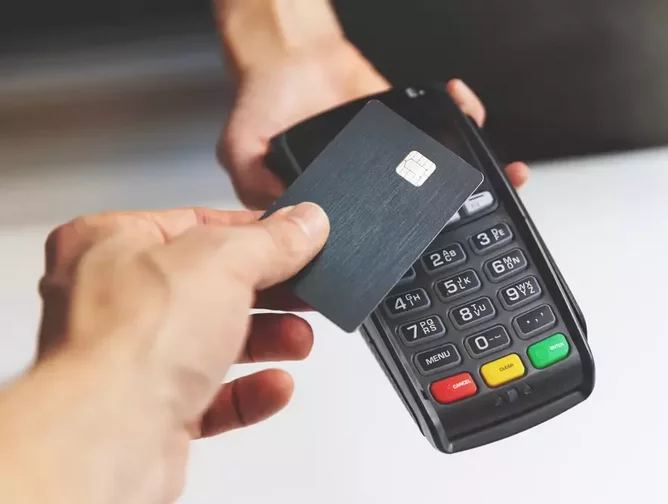When it comes to processing digital payments, a POS system includes both the hardware and software components needed to make the transaction. The software manages the remaining payment methods, processing, and other peripheral value-added services, including the card acceptance machine.
When it comes to retail operations, point of sale terminals has risen to the fore. The very first point-of-sale (POS) terminals were purely for accepting credit card payments. Mobile wallets and other forms of contactless payment have been added to POS systems throughout time. ePOS, a payments acceptance program that runs on a smartphone and may be used to accept a limited number of digital payments without a physical card swipe machine, is now a reality thanks to technology improvements.

Modern point-of-sale (POS) systems are available in a variety of shapes and sizes, and can take a wide range of payment methods, including:
- Both cash and check.
- Magnetic-stripe debit, credit, and prepaid cards.
- Chip-enabled debit, credit, and prepaid cards.
- Mobile wallets, the unified payments interface UPI, or a fast response code can all be used to make contactless payments (QR code)
A POS Terminal’s Method of Operation
To accept credit card payments, a POS terminal has three options:
- To begin a transaction, a magnetic stripe card is swiped.
- You place your card into the POS machine, which holds it there for the duration of the transaction.
- Contactless payments can be made by just tapping the POS terminal with a Europay, MasterCard, and Visa (EMV) chip card.
- Encrypted radio waves communicate the transactional data, which is then used to complete the transaction quickly and securely. There is no need to swipe, insert, or even hand over the card to the merchant as a result.
When a POS terminal is used to start a payment:
- In order for the merchant to receive banking and credit card services, the machine connects to the acquirer bank.
- The customer is prompted to enter their password by the machine.
- The card issuing bank is now approached via the payment networks (like Visa or Mastercard) for authorisation.
- In order to verify that the transaction is legitimate, the card issuing bank undertakes a few simple checks.
- This information is sent back to the POS terminal and the programme to demonstrate that the transaction was successful.
- This transaction has resulted in the generation of a confirmation document.
How Do You Determine Which Digital POS Solution Is Right?
Customers’ happiness and payment processes can be streamlined by using a digital POS system. When making your final decision, keep these considerations in mind:
It’s Customised for You!
Different digital point-of-sale devices are on the market, and you should pick the one that best suits your payment requirements from among those. There are a number of businesses where payment is accepted on-site, therefore a light device would be ideal.
Various Methods of Payment Accepted.
It’s important to make sure that your digital POS machine is up to date with the latest technology and accepts all payment methods, including debit and credit cards, chip cards, UPI, QR codes, and so on.
Enormous Protection
The protection of customer data is as critical as ensuring the accuracy of that data. As a result, you must guarantee that your digital point of sale system is PCI-DSS (Payment Card Industry Data Security Standard) and EMV-compliant in order to protect customer data.
Options for Connectivity
To create a positive client experience, connectivity must be taken into account.
Payments can be made much more quickly and easily with a digital POS equipment that has Bluetooth, Wi-Fi, or 4G/3G connectivity.







